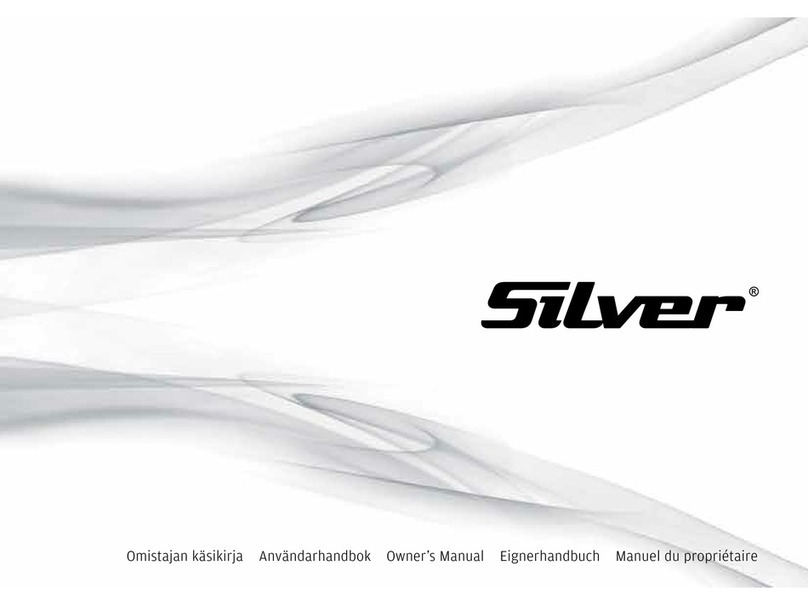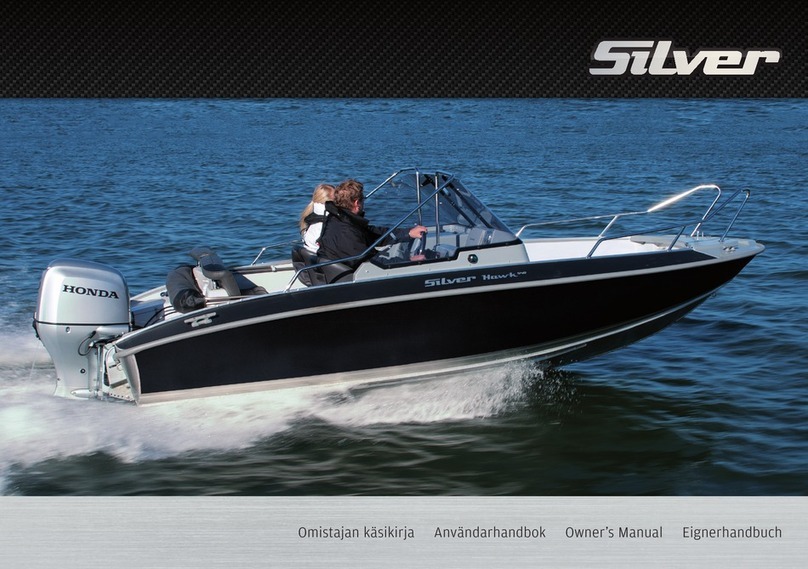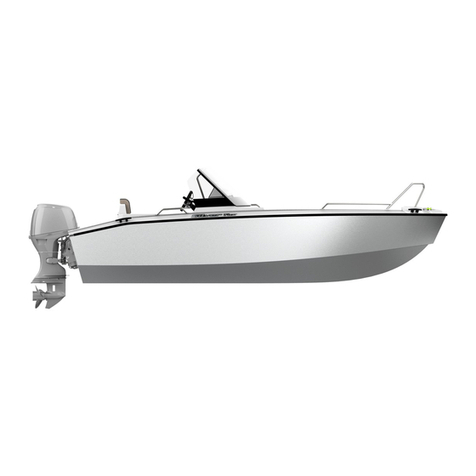1General
The owner’s manual will help you familiarise yourself with the properties and features of
your new boat and with its care and maintenance. Separate manuals for installed equipment
are attached and are referred to in many sections of the owner’s manual. You can
supplement this user manual by adding the manuals of devices which are installed
afterwards. There is also space for your own notes at the end of the manual.
The craft has a running serial number, a WIN-code (Watercraft Identification Number). The
WIN-code can be found on the starboard side of the transom just below the bathing
platform. We recommend that you write down the WIN-code in this manual. When
contacting the dealer, please provide the WIN code and the type of craft. This helps in
delivering the correct spare parts.
DECLARATION OF CONFORMITY
Recreational Craft Directive 2013/53/EC
Manufacturer: Fenix Marin Oy
Module used: B, EC Type-examination
-----------------------------------------------------------------------------------------------------------------
THIS DECLARATION IS PREPARED BY
Marketer: TerhiTec Oy /Oy Brandt Ab
Address: Sorvitie 4
Postal code: 63700 City: Ähtäri
Country: (code): FIN (spelled out): Finland
-----------------------------------------------------------------------------------------------------------------
NOTIFIED BODY
Name: Eurofins Expert Services ID number: no. 0537
Address: Post Box 47
Postal code: 02151 City: Espoo
Country (code): FIN (spelled out): Finland
EC type examination certificate: EUFI 29-190005156
-----------------------------------------------------------------------------------------------------------------
DESCRIPTION OF THE RECREATIONAL CRAFT
Brand name of the recreational craft Silver
Model or number Tiger Day Cruiser
Design category C
































